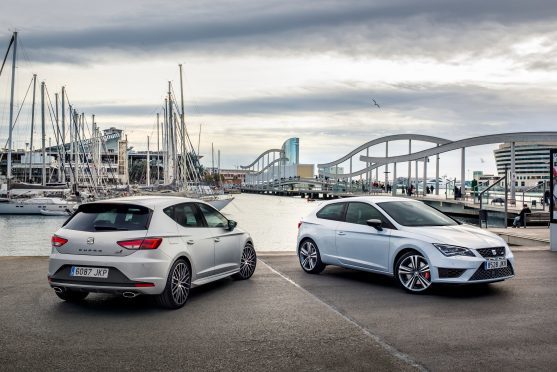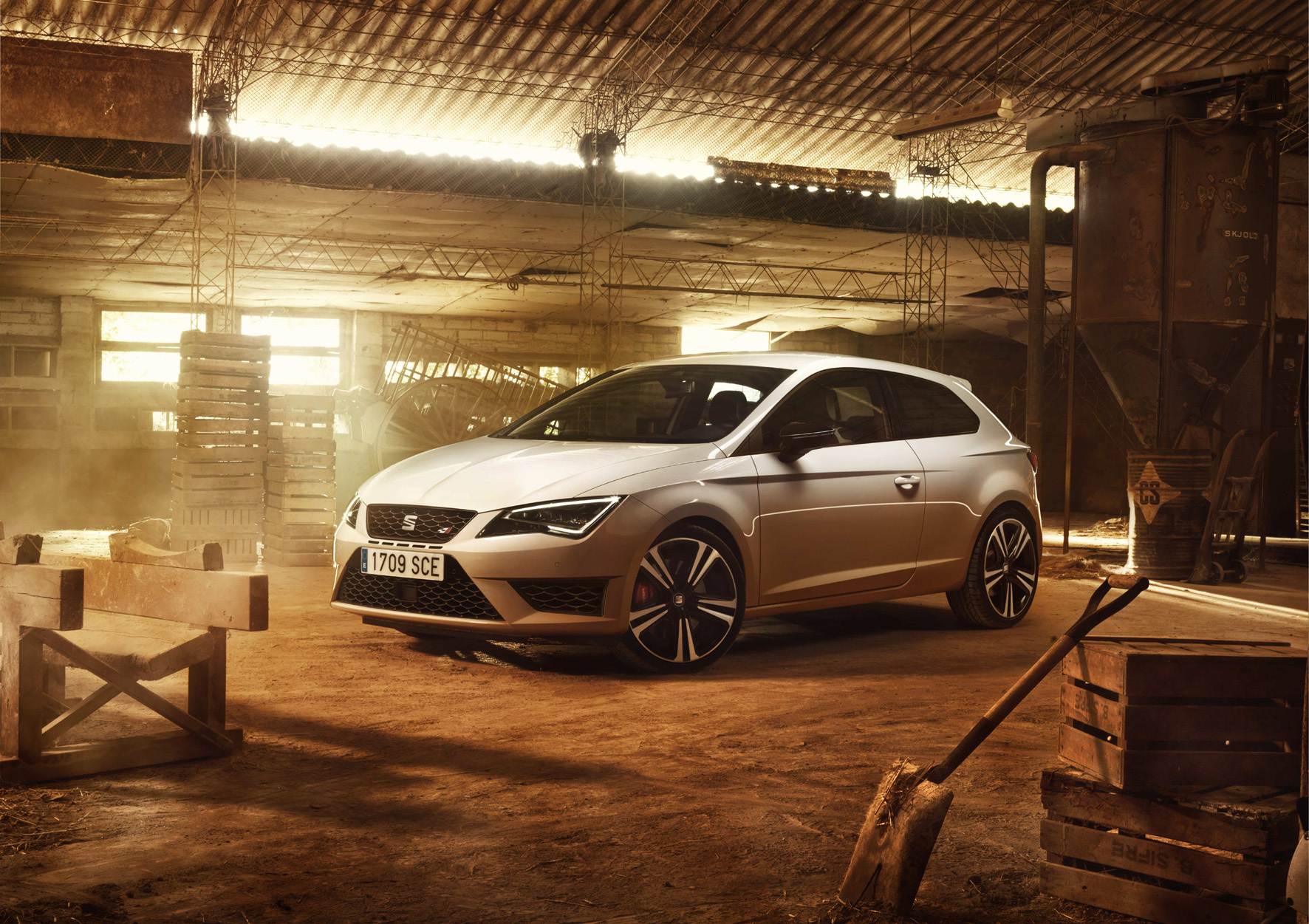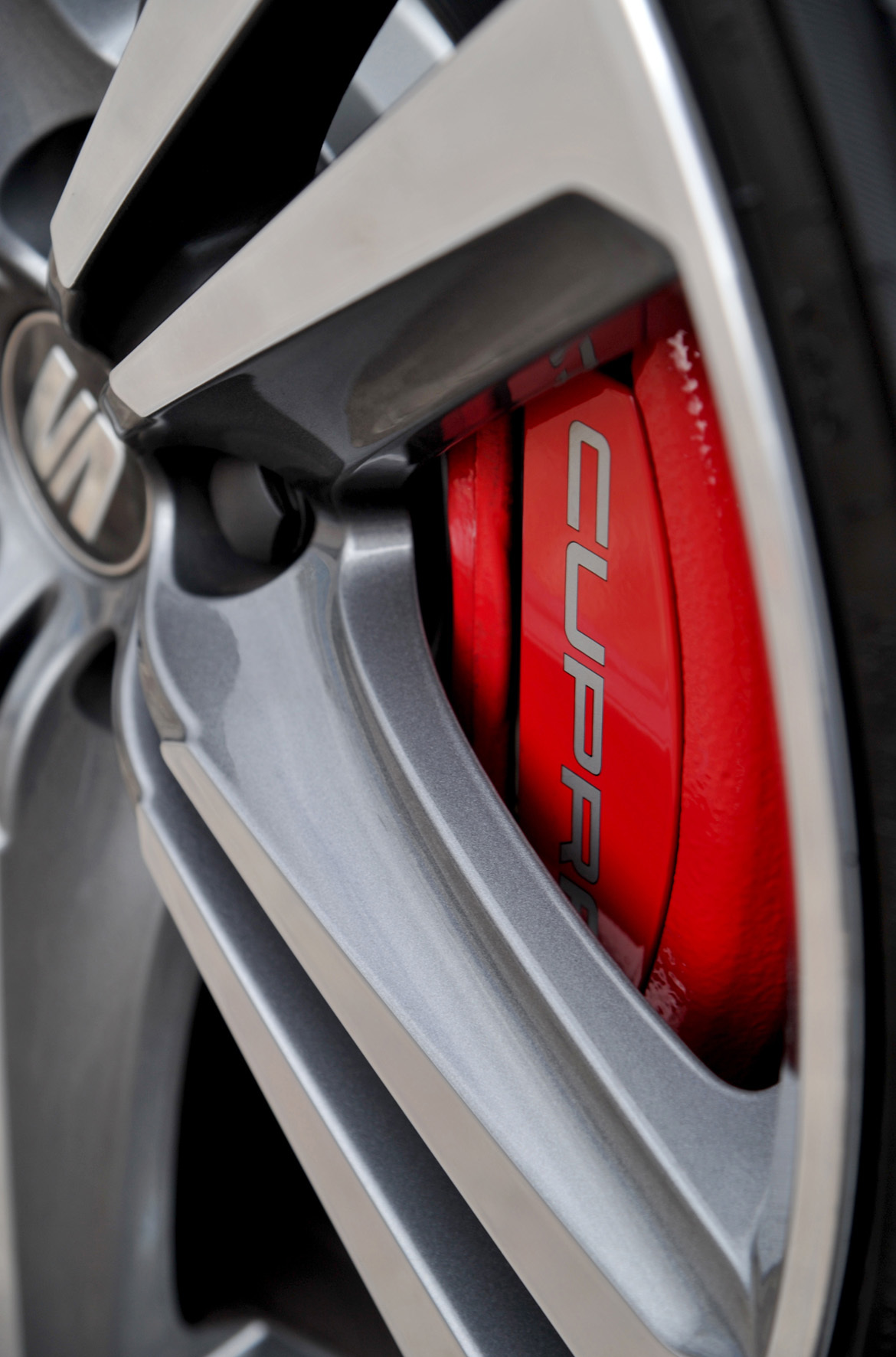In the history of mid-life updates, this is possibly the smallest you’ll ever have seen.
No cosmetic revisions here; not even new alloy wheel designs. The only mechanical difference is a new exhaust system with lower back pressure and a 5.8kg weight saving.
Performance-wise, you’ll have noticed the name is now Cupra 290, and true to form it has 10bhp more than the old one. A tweak in the engine management software delivers the nominal extra go, which comes hand-in-hand with a wider peak torque band. The full 258lb/ft is now put down between 1,700rpm and 5,800rpm; 50 and 500rpm improvements at either end.
There’s also Full Link phone-pairing software, so whatever your phone it should hook up to the system with a degree of internet connectivity.
Nothing changes with the appearance because Seat has hit on a winning formula. The Leon is its best-selling car, and it’s the first real international sales barnstormer the company has had this decade. It ain’t broke, so there’s no point fixing it. The change is the boot badge upgrade, to Cupra 290.
From right now you can get the 290 in three-door (and loveliest) SC, do-it-all five-door hatch and more practical ST estate shapes. The ST has a couple of hundred litres more boot space than the 380-litre tub shared by the other two. There’s adequate rear legroom for passengers but it’s not the airiest place for them to be. If there was a black mark it would be on the white seat trim, because it’s the sort of thing that will get dirty all too easily.
Hit the road and you’ll forget all about what has been updated and has not. The free-revving 2.0-litre engine masters everyday driving with barely 20% of its ability. Use a bit more right boot and fast turbo response gives you astonishing overtaking punch. Keep the throttle pinned on your friendly local private airfield and it’ll get to the 155mph limiter with ease. It’s a monster.
It also sounds better. That new exhaust gives it more of a growl both inside and outside the car, and unless I was dreaming it’s a bit louder, too. Both good things.
It changes direction like a rogue firework even under power, if you’re skilled enough to handle it that way. The VAQ slip-limiting system is as good now as it always was – that is, superb. Be aware, though, that it’s much firmer on the track-biased Michelin Pilot Cup 2 tyres that you can add as options. The standard Continentals are much more forgiving.
With the Cupra 265 confined to the bin, the entry point is now the full-fat, and beautiful, SC. The highest-spec Focus ST is more than £2,000 cheaper (before haggling), but it’s not as accomplished a motor. On the other hand a Civic Type R is more expensive and you get less equipment to show for it.
The Leon could be a bit better equipped, as evidenced by the now-huge options list, but everything you really want is on the car already. In terms of value it splits the pack, but it depends what each buyer is actually looking or hoping for.
The flagship Cupra still isn’t that common a sight in the UK, but owners are the type who exchange a nod and a wave. It’s like a secret shared between two strangers: it’s a hell of a car, and those people who’ve bought one know exactly why. The Cupra 290, like the 280 before it, is part of modern hot hatch legend – if only within the scene itself.
Model: Seat Leon Cupra 290
Price: From £28,375
Engine: 2.0-litre turbocharged petrol producing 286bhp and 258lb/ft
Performance: Top speed 155mph, 0-62mph in 5.6 seconds (SC)
Economy: 40.4mpg combined
CO2 rating: 164g/km


